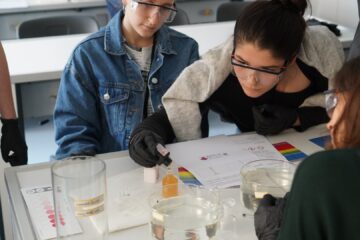Media Science & Politology
It was a quite hard thing to decide how I should go about the fifth and final segment of my essay. I needed something that included (almost) all the aforementioned topics while also bringing in some new elements. I needed something interesting. Something fun.
How about some time travel?
The date is September 26, 1960 and the first ever nationally televised presidential debate in US history is about
to get started The two candidates need no introduction. On the right side of the stage sits Richard M.
Nixon , Vice President of the USA, on the left, Democratic Candidate, Senator John F.
, Vice President of the USA, on the left, Democratic Candidate, Senator John F.
Kennedy. As the debate begins, over 70 million Americans watch it all play out live, from their homes on their televisions, however some are left without visuals, only listening through their radios.
Intriguingly, after the debate ended the opinion of the people on who the winner was seemed to greatly depend on whether they actually watched the debate or only listened to it. This goes to show how nonverbal communication can be just as (if not more) important than verbal communication. Kennedy was young, energetic, charismatic and had confident body language while Nixon looked pale and ill. The results were undeniable. Americans that watched the debate tended to prefer Kennedy, the ones that only listened, were on Nixon’s side.
Since then, politicians and media personalities use body language to their advantage whilst also being very careful with their choice of words to win the public over.
Then what really is communication?
In conclusion, communication can be many things. It can be shaking hands, staring, sitting up straight, smiling, frowning, admiring art or even dancing. There is no singular definition.
However, there is one thing that communication always has been and always will be.
Necessary.
As humans, we need communication It is the thing, that holds our society together, the thing we must have so that we can maintain order and peace.

0 Comments